Thinking about putting a plastic shed right on your lawn? It sounds easy, right? Just pick a spot, drop it down, and you’re done. But wait, can you put a plastic shed on grass? The answer isn’t just yes or no. There’s a lot to think about: moisture, sinking floors, pests, and more.
Table of Contents:[hide]
In this guide, we’ll discuss the risks, when grass might work, and what to do if you don’t have a fancy foundation. Read on to learn more.
Is It Possible to Put a Plastic Shed on Grass?
The short answer? Yes, you can, but it’s not always the best idea. Setting up your plastic shed on grass might feel quick and easy, but hold on, it comes with some challenges. Plastic sheds are lightweight and flexible.
That makes them easy to move, but also means they need a solid base to stay level. Grass can shift, sink, and soak up water, which can mess with your shed’s floor or even make it tilt over time.
So while it’s possible, it’s not perfect. Let’s dig deeper.
Potential Problems of Placing a Shed on Grass
It might seem harmless, but placing a shed on grass can cause a bunch of problems down the road. Here’s what you need to watch for:
- Uneven Ground: Grass doesn’t stay even for long. Rain, roots, and foot traffic can cause dips or bumps. Your shed might start leaning or worse, the doors won’t shut properly.
- Moisture Buildup: Grass holds water, and that moisture rises. It can seep into your shed floor, causing mildew, mold, or rot even if your plastic storage shed has a floor.
- Insect Problems: Damp grass is a playground for bugs. Ants, termites, and spiders might crawl in, especially if your shed base on grass isn’t sealed.
- Shorter Shed Life: A soggy floor or a tilted frame puts stress on the entire shed structure. Over time, this can wear it out faster, even with weatherproof materials.
When Might It Be Okay to Use Grass?
Still wondering, can you put a shed on grass? Well, yes, you can! But only in the right situations. It’s not a one-size-fits-all answer. Sometimes, using grass as your base makes sense. Let’s break down when it’s okay to skip the concrete and go green.
Short-Term Storage Needs
If your shed’s just for a quick job like storing tools for a summer garden project or holding bikes for a season, placing it on grass might be fine. You’re not making a forever decision, so a solid shed base on grass works for now.
Temporary Building Structures
Got a lightweight, no-frills shed? Maybe you’re not planning to bolt it down, run wiring, or store anything too heavy. In that case, grass can handle the load. Please note that temporary building structures like this require regular inspections to ensure that everything remains level and dry underneath.
Well-Drained, Solid Ground
Live in a dry area with firm, well-packed soil? Lucky you! That kind of ground won’t trap water so you won’t see the usual rot, mold, or sinking issues. It’s one of the only times when a shed on grass doesn’t turn into a maintenance headache.
You're Willing to Watch and Adjust
Even in good conditions, grass shifts. If you’re okay with checking under your shed now and then, adding pavers later, or tossing in gravel if it starts to sag, then go ahead. You’re flexible, and your shed setup can be too.
So yeah, can you put a shed on grass? You can, but only if you’re okay with the trade-offs. It’s not the best long-term plan, but it works when your storage needs are light, short, or temporary.
Best Base Options Instead of Grass
Want a better base? You’ve got choices. These shed foundations work great and are easy to set up no need to pour concrete unless you want to.
1. Gravel Pad:
Looking for a no-fuss, budget-friendly shed base? Gravel is your best friend. It’s super simple to lay down and does a great job letting rainwater drain away. That means no soggy ground, no mold, and no tilted sheds. Gravel also helps keep bugs and weeds out from under your shed. It’s a smart move for most plastic storage shed foundation needs and it doesn’t cost an arm and a leg.
Pro Tip: Want to make it look sharp? Add a border and throw in some gravel landscaping around shed edges. It keeps things neat and weed-free!
2. Paver Stones:
Pavers are flat, strong, and give your shed a solid, level surface to sit on. They're great if you want something that looks polished and doesn’t take forever to install. You can easily replace one if it cracks, no big deal. This base works well for mid-size sheds and is a great option if you’re asking yourself what to put a shed on without pouring a full slab.
3. Plastic Shed Base Grids:
If you’re all about quick setups and zero digging, plastic shed base grids might be just what you need. These snap-together pieces sit right on your grass and provide a flat, sturdy surface for your shed. They’re lightweight, easy to move, and DIY-friendly. It’s a favorite for folks doing shed setup in a hurry, no mess, no stress!
4. Wooden Decking:
Want to raise your shed a bit off the ground? Go for wooden decking. Use pressure-treated wood that can handle rain and bugs. It’s ideal for damp or uneven yards. Just make sure it’s level before you start stacking stuff inside. And don’t forget to seal it, wood can rot if it gets too wet. Wooden bases work great for temporary outdoor structures that still feel pretty sturdy.
5. Concrete Slab (For Bigger Sheds)
If you’ve got a big shed or plan to keep it for years, a concrete slab is the gold standard. It’s solid, won’t move, and keeps water, pests, and wind from messing with your setup. But heads-up, it’s more permanent and not the best choice if you’re renting or might move your shed later. Still, when it comes to serious strength, concrete wins the game.
Tips If You Must Place a Shed on Grass
If you’re going to do it anyway, here are a few smart steps to make it work:
- Mow the grass short before setup
- Lay down a tarp or heavy-duty weed barrier
- Add pressure-treated wood beams under the shed floor
- Use blocks or pavers at the corners to lift it off the ground
- Seal the shed base to block moisture
- Check regularly for shifting or soft spots
Still wondering, “Can I put a shed on grass?” Sure, but make it a safe, dry, and level spot.
Patiowell’s Plastic Shed Options
Looking for a shed that’s lightweight but strong? Patiowell has you covered. These plastic storage shed foundation-friendly models are perfect for backyards of all sizes and they’re built with real-life storage needs in mind.
Fit-It Series:

Need something compact and easy to set up? The Fit-It Series is great for smaller spaces and can even go on grass with a few tweaks.
- Available in sizes like 4×4, 4×6
- Quick-click panels (no tools needed)
- Built-in ventilation and lockable doors
- Lightweight yet tough
Kick-It Series:

Need more room for your lawn gear or bikes? The Kick-It Series offers more strength and stability, especially if you add a better base.
- Sizes like 8×6 and 8×10
- Double-wall resin for extra support
- Great for long-term outdoor use
- Optional flooring kits
Why Patiowell Works Great:
All Patiowell plastic sheds include:
- Weather-resistant resin that doesn’t warp or rot
- Lockable doors for security
- Vents to prevent mold
- Easy-to-clean walls
- 10-year warranty and free shipping on most models
If you want shed in yard style without the stress of pouring concrete, this is it.
FAQs
1. Can I move the shed later if I install it on grass?
Yes! That’s the beauty of plastic sheds. They’re easy to take down and move as long as they’re not anchored or wired.
2. Will my shed leak if it's on a grassy surface?
It might. Grass collects moisture, and that can seep into the floor. Use a tarp, pallets, or blocks underneath to keep it dry.
3. How do I stop the floor from rotting?
Choose a shed with a built-in resin floor. Add airflow under the shed with a gravel base or treated wood beams.
4. Do I need a foundation for a plastic shed?
Not always, but it’s a smart move. Even a simple gravel pad or pavers can keep your shed dry, stable, and safe.
Conclusion:
Can you put a plastic shed on grass? Yes, but only if you know what to expect. Grass is soft, damp, and never totally level. If you’re storing tools, bikes, or anything valuable, it’s worth building a better base. Even a layer of gravel or pavers makes a world of difference.
And if you want easy, reliable storage that works in almost any yard, check out Patiowell’s plastic sheds. They’re smart, strong, and made for real-life storage even if your yard’s a little wobbly. Now you’ve got all the tips, tricks, and tools to make your shed setup solid grass or no grass.
Diana Mason
Hi there! I’m Diana Mason, the chief editor of Patiowell brand. With over 15 years of diving deep into the world of outdoor furniture, I’ve developed a keen eye for what makes outdoor spaces truly special. I love sharing tips and inspiration to help you create your perfect backyard retreat. Our blog is a reflection of my passion and expertise, featuring only the best pieces that I personally vouch for. Thanks for stopping by—I can't wait to help you transform your outdoor living space!


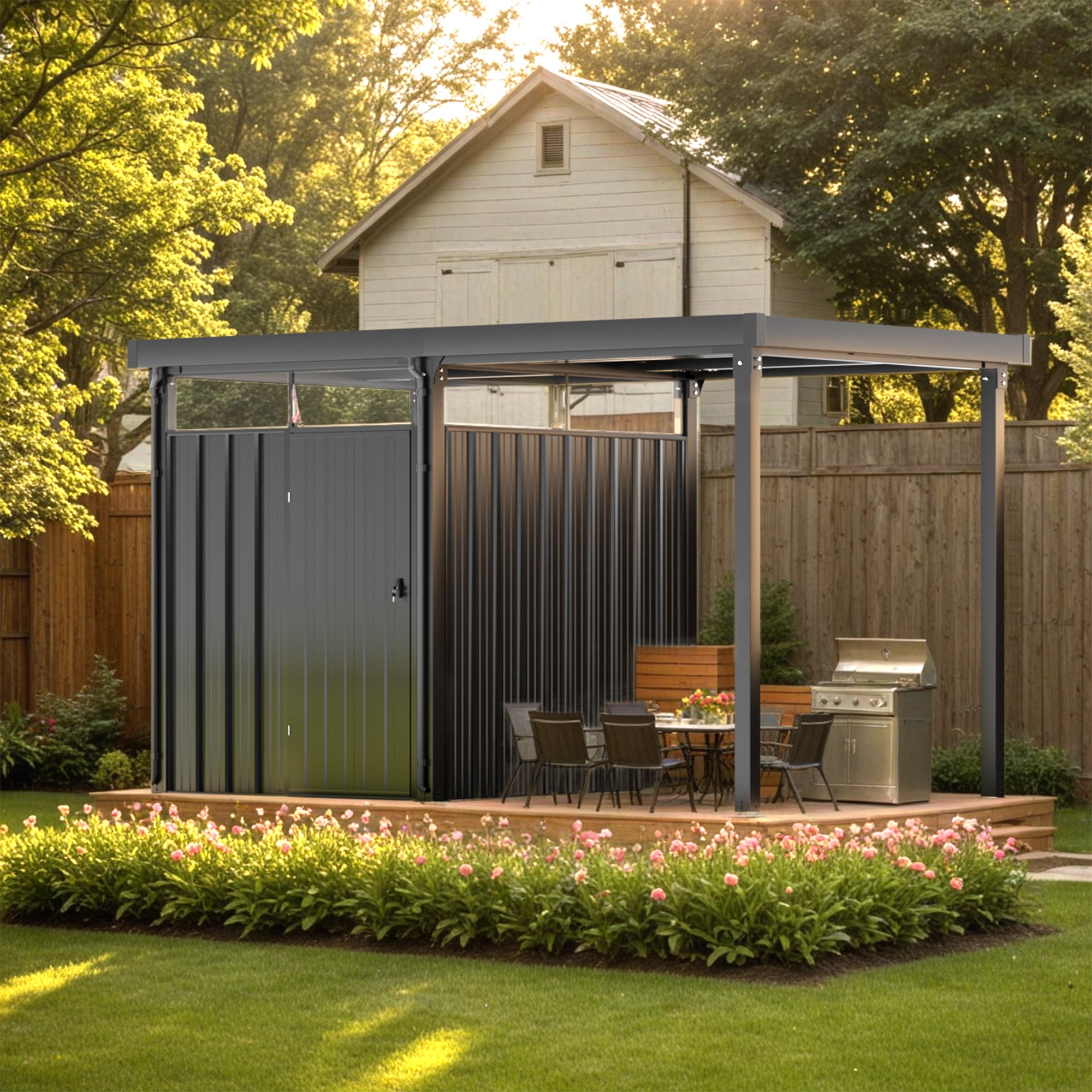
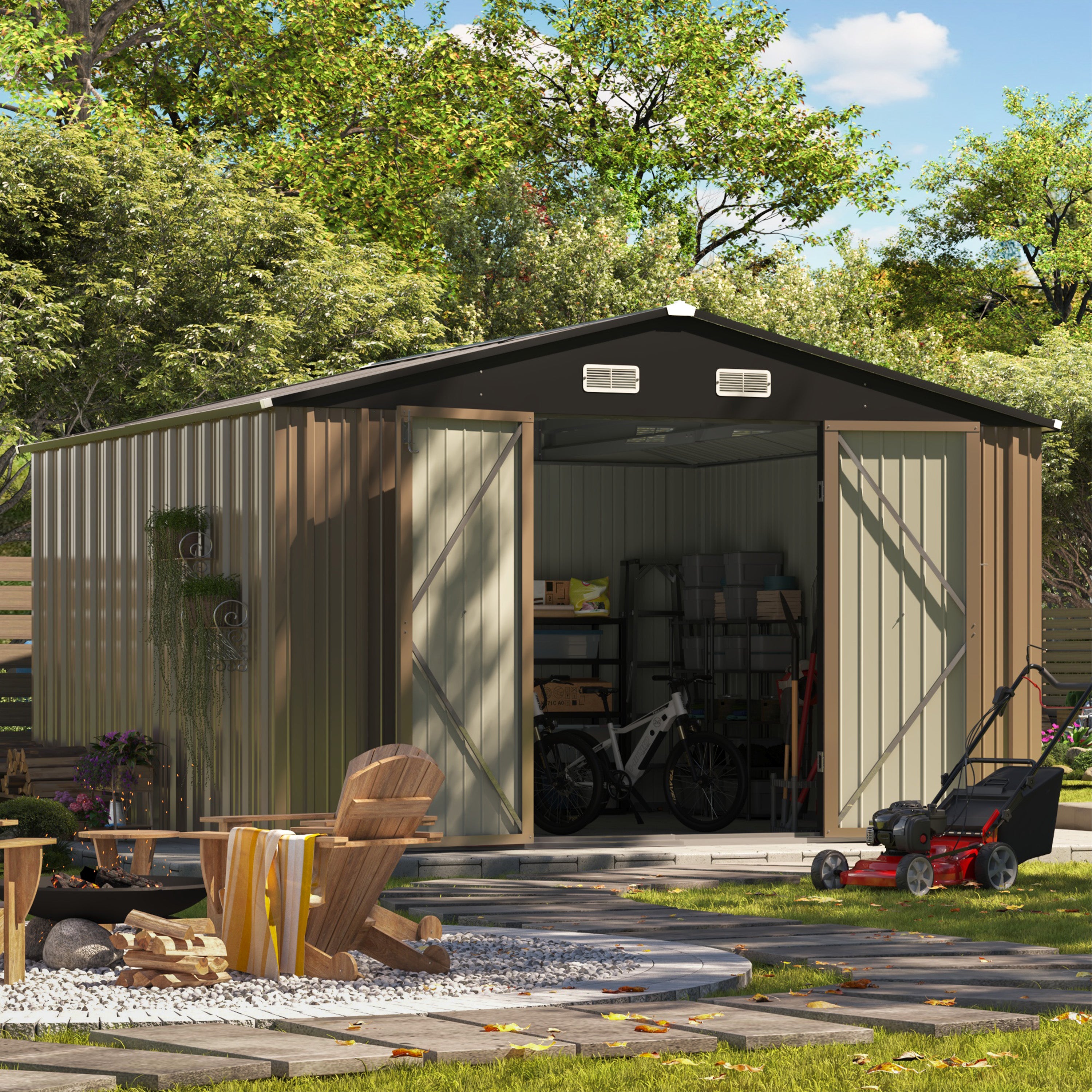
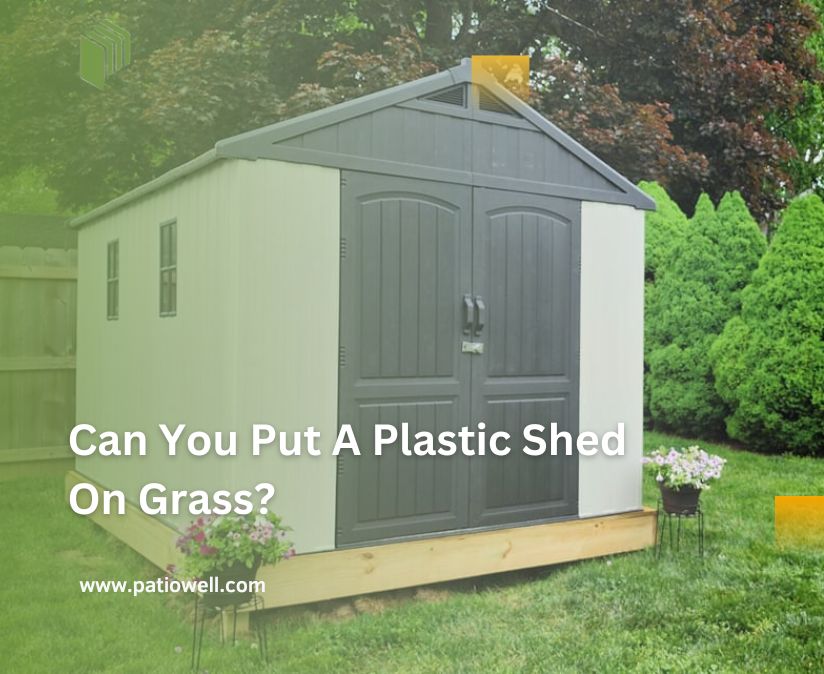
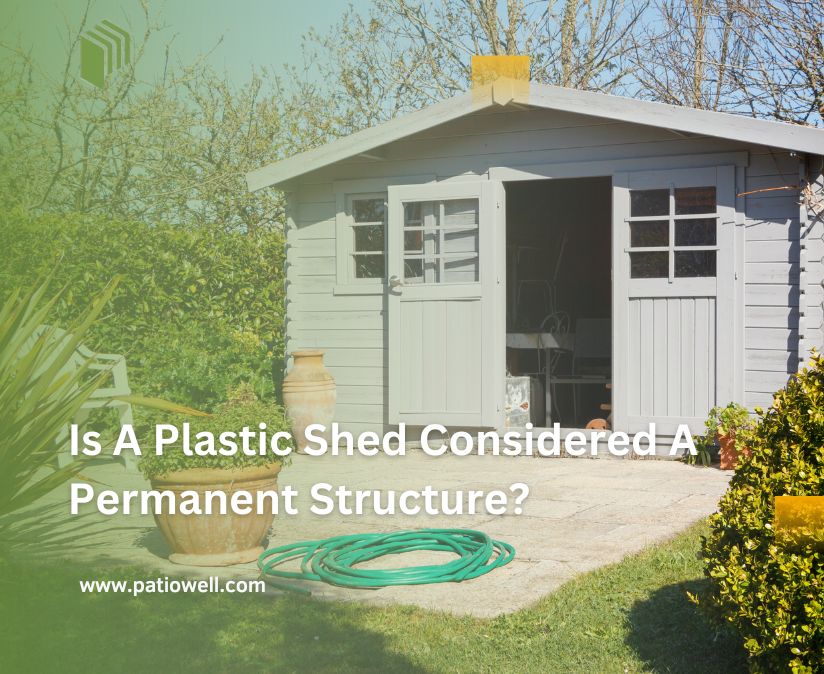
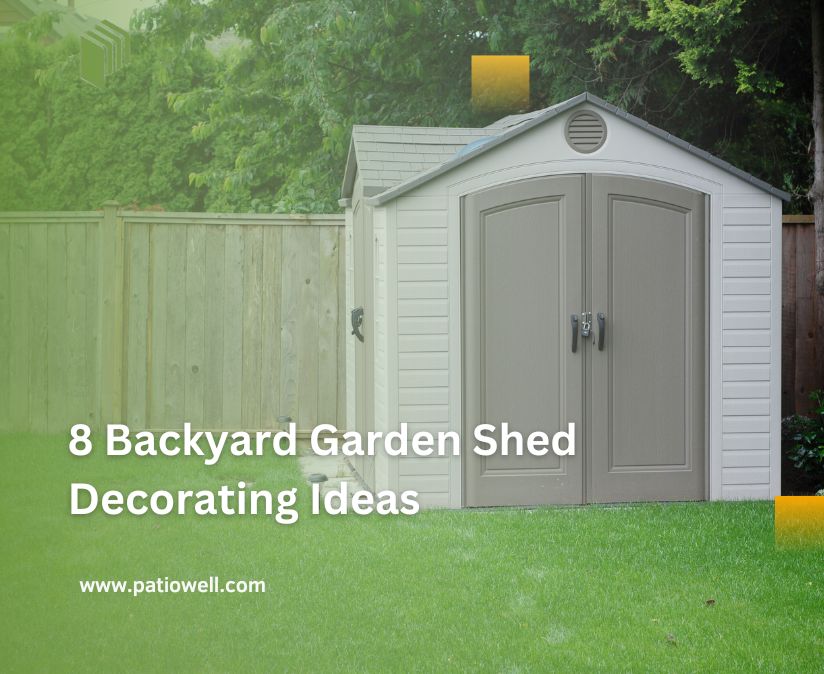
Leave a comment
All comments are moderated before being published.
This site is protected by hCaptcha and the hCaptcha Privacy Policy and Terms of Service apply.